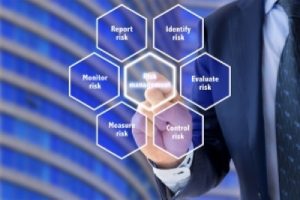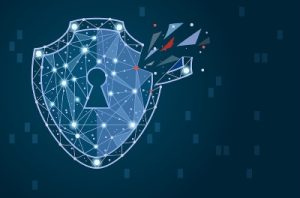11/17/2025 - Certificate of Cloud Security Knowled...
11/17/2025 - GenAI & Government Efficiency: How Sy...
11/17/2025 - CCZT | CCSK Certification Bundle
11/18/2025 - State of Code Webinar Series
11/18/2025 - The Insider Risk Playbook for Federal...
11/18/2025 - State of Defense Business Acquisition...
11/18/2025 - VETS 2 DPA Training
11/18/2025 - Information Security Forum
11/18/2025 - Make Your Data Work for You - The Imp...
11/18/2025 - Agentic AI: What It Is, Why It Matter...
11/18/2025 - Deltek Costpoint Labor, Leave and Pay...
11/18/2025 - Transforming Federal Data: Bringing A...
11/18/2025 - Adobe ColdFusion Horizons: 2026 Relea...
11/18/2025 - Defending The Digital State: Protecti...
11/18/2025 - Shielding Education: Protecting Schoo...
11/19/2025 - SANS 2025 ICS/OT Survey Webcast ...
11/19/2025 - ThreatOps Challenge: Endpoint Workshop
11/19/2025 - Enhancing the Recruiting Process with...
11/19/2025 - Transforming Utility Analytics: Faste...
11/19/2025 - Navigating Contract Challenges After...
11/20/2025 - Boston Cybersecurity Conference
11/20/2025 - Zero Trust Training | CCZT
11/20/2025 - Cyber Threats Move Fast - Be Ready to...
11/20/2025 - TextOres Directory of PRC Military Le...
11/20/2025 - Hands-on Workshop: Getting Started wi...
11/20/2025 - Rebooting The System: Getting Back on...
11/20/2025 - Zero Trust Allowlisting
11/20/2025 - Advanced Editing with Enhanced Workflows
11/20/2025 - Red Hat Device Edge: Simplifying Edge...
11/20/2025 - Zero Trust Training | CCZT
11/21/2025 - Cybersecurity Summit 2025
11/21/2025 - Government Infrastructure Efficiency
12/01/2025 - Certificate of Cloud Security Knowled...
12/01/2025 - 2025 Vision Federal Market Forecast C...
12/02/2025 - Intelligent Data Infrastructure: Powe...
12/02/2025 - 47-Day Certs: A Reality Check for Hig...
12/03/2025 - SANS 2025 Detection and Response Surv...
12/03/2025 - Cyturus - The Day After Compliance Series
12/03/2025 - Addressing Security Holes in Air Gapp...
12/03/2025 - Rideshare Lessons from Government
12/04/2025 - Imagine Nation ELC 2025
12/04/2025 - Austin Cybersecurity Conference
12/04/2025 - Dallas/Ft. Worth | Government Contrac...
12/04/2025 - Decode, Defend, Dominate: Experience...
12/04/2025 - AI Adoption: Factors Agencies Should...
12/04/2025 - Hands-on Workshop: Defend Yourself Ag...
12/04/2025 - Beyond the API: Unlock AI Agent to Ag...
12/04/2025 - Transitioning to GitLab for Modern Pl...
12/04/2025 - Modernizing OIG Investigations: AI-Po...
12/04/2025 - Accelerate AWS Compliance: CloudNova'...
12/04/2025 - From Chaos to Clarity: Mastering Appl...
12/04/2025 - The Future Belongs to Learners: Deep...
12/04/2025 - Digital Government that Delivers: Acc...
12/08/2025 - CCSP | Official ISC2 Training Week
12/08/2025 - CGRC | Official ISC2 Training Week
12/09/2025 - DefenseTalks
12/09/2025 - Gartner IT Infrastructure, Operations...
12/09/2025 - Small Business Committee Breakfast
12/09/2025 - AI in Action: Microsoft 365 Copilot W...
12/09/2025 - Transforming Cyber Leadership | Alexa...
12/09/2025 - Streamlining Records Management with...
12/09/2025 - LILT + Google: AI for Enterprise Tran...
12/09/2025 - Transforming Public Sector Audits wit...
12/09/2025 - Transformative Solution: Bridging the...
12/09/2025 - Actualizing Your Full Potential Acros...
12/09/2025 - Elevating Federal Collaboration: Turn...
12/09/2025 - Bridging the BI Utilization Gap: Exec...
12/09/2025 - From Planning to Practice: Accelerati...
12/10/2025 - Nashville Cybersecurity Conference
12/10/2025 - Public Sector Low-Code App Engine Inn...
12/10/2025 - AWS Cloud Practitioner Boot Camp
12/10/2025 - Synthetic Data in Cybersecurity: Over...
12/10/2025 - Using CTEM for Continuous Risk Management
12/10/2025 - Federal Emergency Preparedness and Re...
12/10/2025 - Shaping the Future of Urban Infrastructure
12/10/2025 - Modern Application Security in the Fe...
12/10/2025 - How to Make GenAI a Better Work Assistant
12/11/2025 - INTERFACE Seattle 2025
12/11/2025 - Public Sector CIO Summit
12/11/2025 - Electronic Records Transfer to NARA
12/11/2025 - MongoDB Partner Associate Certificati...
12/11/2025 - Deltek Costpoint General Ledger and P...
12/11/2025 - Discover the AI Assistant that Unders...
12/11/2025 - Building a Strong Foundation for Ethi...
12/11/2025 - Modernizing Government Design with Ad...
12/11/2025 - AI Aftershocks in Healthcare
12/11/2025 - Dynatrace AI-Powered Observability
12/11/2025 - The Future Belongs to Learners Series...
12/11/2025 - Compliance in the Cloud: FedRAMP Mode...
12/11/2025 - Modernizing Healthcare Data with Amaz...
12/11/2025 - UAV Mapping at Scale with ideaForge:...
12/11/2025 - Higher Education Financial Planning a...
12/11/2025 - Connecting Strategy to Service Delive...
12/15/2025 - CISSP | Official ISC2 Training Week
12/15/2025 - SSCP | Official ISC2 Training Week
12/16/2025 - Federal Zero Trust Forum
12/16/2025 - SAP Public Sector Summit 2025
12/16/2025 - The Future Belongs to Learners Series...
12/17/2025 - AI at Work: Modernizing Compliance, F...
12/17/2025 - AI at Work: Modernizing Compliance, F...
12/17/2025 - ThreatOps Challenge: Cloud Workshop
12/17/2025 - Shift Left, Automate Right: AI-Powere...
12/18/2025 - Protecting High-Profile Individuals i...
01/09/2026 - AI Summit | Tyson's, Virginia
01/12/2026 - SANS Nashville Winter 2026
01/12/2026 - CISSP | Official ISC2 Training Week
01/13/2026 - Intelligent Data Infrastructure: Powe...
01/13/2026 - Deltek Costpoint and IRS Form 1099 Ye...
01/14/2026 - Zero Trust: Reinforcing Cyber Resilie...
01/14/2026 - ERM Workshop 2026
01/14/2026 - Cyturus - The Day After Compliance Series
01/15/2026 - Los Angeles Cybersecurity Conference
01/15/2026 - Zero Trust Training | CCZT
01/20/2026 - Elastic Interactive Lab: Build Smarte...
01/21/2026 - Agentic AI in Action: Improving Effic...
01/21/2026 - Certificate of Cloud Security Knowled...
01/21/2026 - ISC2 Spotlight: Governance, Risk ...
01/21/2026 - CCZT | CCSK Certification Bundle
01/22/2026 - Dallas Cybersecurity Conference
01/26/2026 - CCSP | Official ISC2 Training Week
01/27/2026 - Public Sector Summit: Innovating Gove...
01/28/2026 - AI in Risk Intelligence: A Practical...
01/29/2026 - IBM Think Gov 2025
01/29/2026 - Chicago Cybersecurity Conference
02/02/2026 - Rocky Mountain Cyberspace Symposium 2026
02/02/2026 - SANS Rockville 2026
02/02/2026 - CISSP | Official ISC2 Training Week
02/02/2026 - Certificate of Cloud Security Knowled...
02/02/2026 - CCZT | CCSK Certification Bundle
02/03/2026 - Workday Federal Forum
02/05/2026 - 2nd Annual AFCEA Silicon Valley Cyber...
02/05/2026 - Zero Trust Training | CCZT
02/08/2026 - Nexus 2026
02/09/2026 - CCSP | Official ISC2 Training Week
02/11/2026 - Cyturus - The Day After Compliance Series
02/12/2026 - Baltimore Cybersecurity Conference
02/18/2026 - Connecting Every Mile & Every Gallon...
02/18/2026 - National Leadership Training 2026
02/18/2026 - Zero Trust Academy: Strategy + AWS Te...
02/19/2026 - Detroit Cybersecurity Conference
02/19/2026 - CyberTalks
02/19/2026 - DevSecOps: Building Secure-by-Design...
02/19/2026 - Zero Trust Academy: Strategy & Foundations
02/19/2026 - Zero Trust Academy: AWS Technical Imp...
02/23/2026 - SANS Surge 2026
02/23/2026 - Certificate of Cloud Security Knowled...
02/24/2026 - Global Trade Compliance Seminars in Anaheim
02/26/2026 - Cybersecurity Futures: Built on Zero Trust
02/26/2026 - St. Louis Cybersecurity Conference
02/26/2026 - 2026 Defense IT Summit
03/02/2026 - CISSP | Official ISC2 Training Week
03/04/2026 - Zero Trust World 2026
03/09/2026 - 2026 NAHRO Washington Conference
03/09/2026 - SSCP | Official ISC2 Training Week
03/11/2026 - Cyturus - The Day After Compliance Series
03/12/2026 - Tampa Cybersecurity Conference
03/17/2026 - Technology & Transformation Summit
03/18/2026 - 2nd Annual TechNet Pacific Northwest...
03/19/2026 - Public Sector Workforce Modernization...
03/19/2026 - Philadelphia Cybersecurity Conference
03/23/2026 - RSAC Conference 2026
03/23/2026 - Certificate of Cloud Security Knowled...
03/23/2026 - ISC2 CISSP Training Week
03/30/2026 - Zero Trust Training | CCZT
04/09/2026 - Minneapolis Cybersecurity Conference
04/15/2026 - 5th Annual C5 Cyber & IT Forum Hawaii
04/16/2026 - Datadog GovSummit
04/23/2026 - Toronto Cybersecurity Conference
04/27/2026 - Certificate of Cloud Security Knowled...
04/27/2026 - CCZT | CCSK Certification Bundle
04/30/2026 - Zero Trust Training | CCZT
05/04/2026 - CCSP | Official ISC2 Training Week
05/05/2026 - Performance Counts
05/07/2026 - Seattle Cybersecurity Conference
05/11/2026 - CISSP | Official ISC2 Training Week
05/17/2026 - Joint Annual Scientific Meeting of th...
05/18/2026 - CSSLP | Official ISC2 Training Week
05/21/2026 - Pittsburgh Cybersecurity Conference
06/01/2026 - Certificate of Cloud Security Knowled...
06/01/2026 - CCZT | CCSK Certification Bundle
06/04/2026 - Orlando Cybersecurity Conference
06/04/2026 - Zero Trust Training | CCZT
06/08/2026 - CGRC | Official ISC2 Training Week
06/11/2026 - Kansas City Cybersecurity Conference
06/25/2026 - Orange County Cybersecurity Conference
07/09/2026 - Vancouver Cybersecurity Conference
07/13/2026 - Certificate of Cloud Security Knowled...
07/23/2026 - Denver Cybersecurity Conference
08/01/2026 - Black Hat USA 2026
08/10/2026 - CCSP | Official ISC2 Training Week
08/13/2026 - Omaha Cybersecurity Conference
08/17/2026 - Certificate of Cloud Security Knowled...
08/17/2026 - CCZT | CCSK Certification Bundle
08/20/2026 - Zero Trust Training | CCZT
08/27/2026 - Salt Lake City Cybersecurity Conference
09/10/2026 - Charlotte Cybersecurity Conference
09/13/2026 - Cybersecurity & Technology Summit 2026
09/14/2026 - Global Security Exchange (GSX) 2026
09/21/2026 - Certificate of Cloud Security Knowled...
09/24/2026 - Milwaukee Cybersecurity Conference
10/01/2026 - Boston Cybersecurity Conference
10/01/2026 - Zero Trust Training | CCZT
10/15/2026 - Columbus Cybersecurity Conference
10/19/2026 - Certificate of Cloud Security Knowled...
10/29/2026 - Phoenix Cybersecurity Conference
11/05/2026 - San Diego Cybersecurity Conference
11/16/2026 - Certificate of Cloud Security Knowled...
11/16/2026 - CCZT | CCSK Certification Bundle
11/19/2026 - Nashville Cybersecurity Conference
11/19/2026 - Zero Trust Training | CCZT
11/30/2026 - CGRC | Official ISC2 Training Week
12/03/2026 - Houston Cybersecurity Conference
12/07/2026 - Certificate of Cloud Security Knowled...
12/07/2026 - CSSLP | Official ISC2 Training Week
12/10/2026 - Atlanta Cybersecurity Conference
04/05/2027 - 2027 NAHRO Washington Conference
09/19/2027 - Cybersecurity & Technology Summit 2027
09/20/2027 - Global Security Exchange (GSX) 2027
03/27/2028 - 2028 NAHRO Washington Conference








